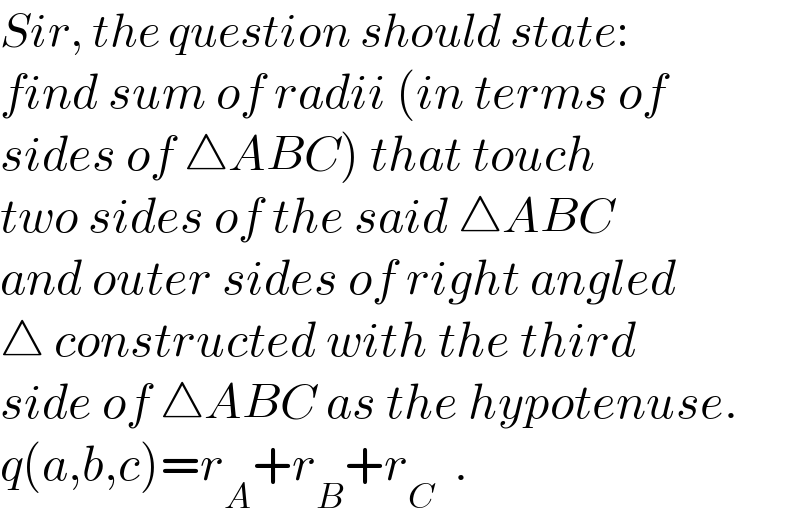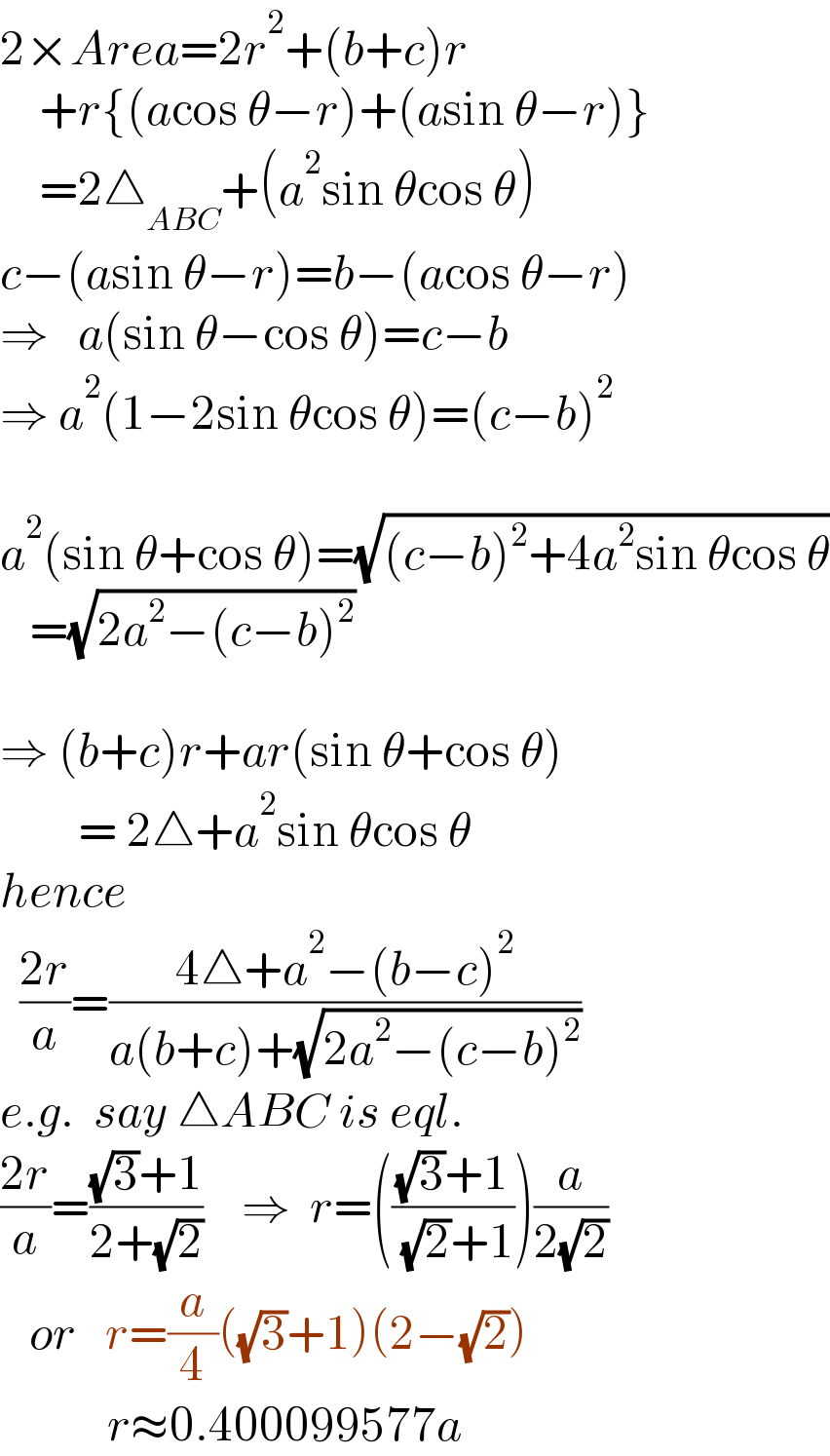
Question and Answers Forum
Question Number 158079 by ajfour last updated on 30/Oct/21

Commented by ajfour last updated on 31/Oct/21

Answered by mr W last updated on 31/Oct/21

Commented by mr W last updated on 01/Nov/21

Commented by ajfour last updated on 01/Nov/21

Commented by mr W last updated on 01/Nov/21

Commented by ajfour last updated on 01/Nov/21

Answered by ajfour last updated on 31/Oct/21

Commented by ajfour last updated on 01/Nov/21

Commented by ajfour last updated on 01/Nov/21

